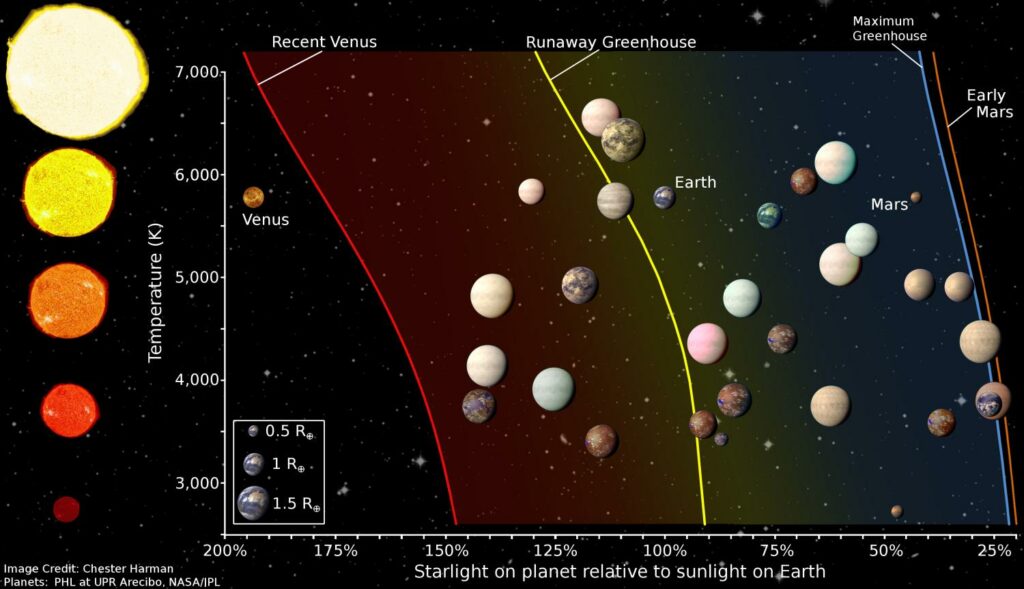Team Lists Probable Candidates for a ‘Second Earth’
An international team of researchers has identified a selection of exoplanets that are most likely to resemble Earth. These findings, which will be published in the Astrophysical Journal, highlight 216 planets discovered by NASA’s Kepler mission that are located within the “habitable zone” – the region around a star where liquid water could exist on a planet’s surface. Among these planets, the researchers have identified 20 as the most promising candidates for habitable rocky planets similar to Earth.Stephen Kane, the lead author of the study and an associate professor of physics and astronomy at San Francisco State University, explains that this catalog represents all of the Kepler discoveries within the habitable zone of their host stars. This allows for focused follow-up studies to gather more information about these planets, including their potential habitability.
The research also confirms that the distribution of Kepler planets within the habitable zone is consistent with those outside of it. This provides further evidence that the universe is abundant with planets and moons that could potentially support life.The boundaries of the habitable zone are crucial in determining a planet’s suitability for life. If a planet is too close to its star, it will experience a runaway greenhouse gas effect, similar to Venus. On the other hand, if it is too far, any water present will freeze, as observed on Mars. Kane and his colleagues categorized the planets based on their position within a conservative or optimistic interpretation of the habitable zone. They also sorted them according to their size, distinguishing between smaller rocky planets and larger gas giants.

The purpose of the four categories is to assist astronomers in focusing their research. For instance, scientists interested in identifying moons that may potentially support life can examine exoplanets within the gas giant categories. Among these categories, the 20 planets with rocky surfaces and conservative habitable zones are the most likely to resemble Earth. Kane has already commenced gathering additional data on these planets, as well as those in the remaining categories.
The comprehensive study and cataloging of over 4,000 exoplanets required more than three years of effort and involved researchers from esteemed institutions such as NASA, Arizona State University, Caltech, University of Hawaii-Manoa, the University of Bordeaux, Cornell University, and the Harvard-Smithsonian Center for Astrophysics. Notably, the team included Natalie Hinkel, a former post-doctoral scholar at SF State who is now affiliated with Arizona State, and Michelle Hill, an undergraduate student from Australia who is studying abroad at SF State.
Hill, who eagerly sought out Kane upon her arrival on campus, expressed her excitement at the vast number of planets discovered, leading her to believe that the existence of another place where life could thrive is highly probable. She quickly became involved in the research project.Kane, renowned as one of the world’s foremost “planet-hunters,” has made significant discoveries, including the identification of several hundred exoplanets, including Kepler-186f, a rocky planet featured in the new catalog. He is now leveraging his scientific expertise to contribute to two upcoming satellite missions: NASA’s Transiting Exoplanet Survey Satellite (TESS) and the European Space Agency’s Characterizing ExOPLanet Satellite (CHEOPS). These missions will greatly benefit from the valuable information derived from his latest research.
Kane emphasized the abundance of potential planetary candidates and the limited availability of telescope time for their study. He believes that this study represents a significant milestone in addressing fundamental questions about the prevalence of life in the universe and the frequency of Earth-like planets.
This article is republished from PhysORG under a Creative Commons license. Read the original article.
Do not forget to share your opinion with us to provide you with the best posts !




0 Comments